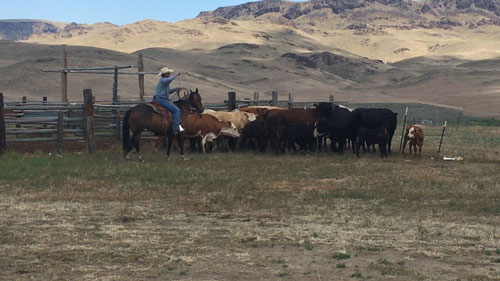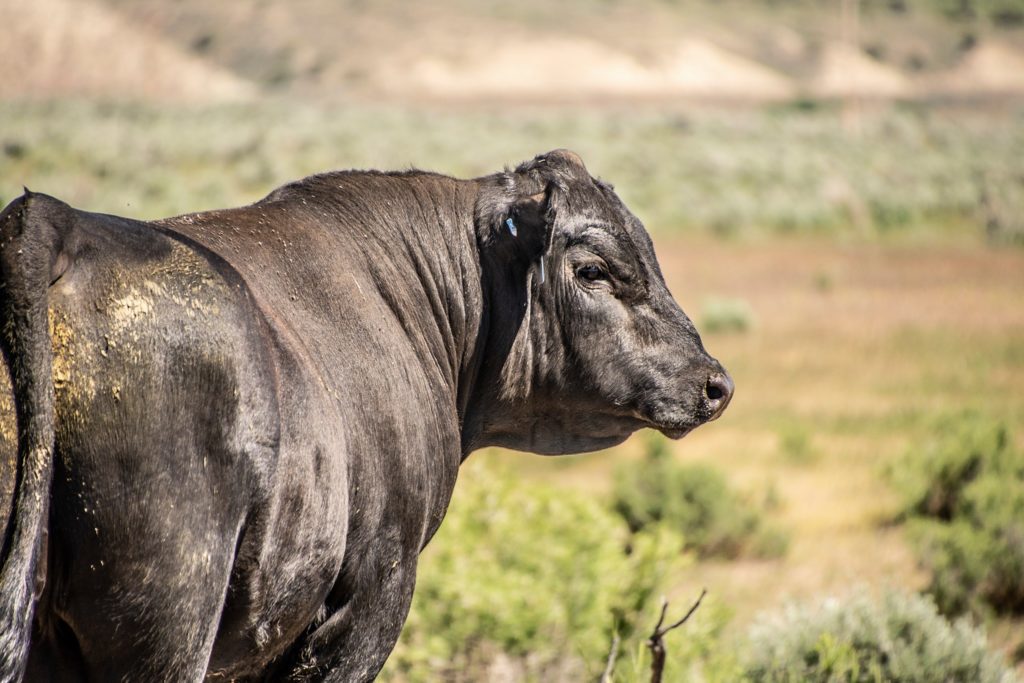This is the time when calves are vaccinated, disbudded – their horn growth plates are cauterized to prevent further growth – and, if it’s going to be a non-breeding bull, castrated.
Until recent years, ranchers roped calves to capture and restrain them while they were branded. But the advent of the squeeze chute and calf table drastically changed how livestock are handled, igniting a debate: which is better, the calf table or roping at branding time?
There hasn’t been evaluation of these practices to shine light on the debate. Until now.
A team of researchers –Sergio Arispe, Oregon State University assistant professor and Extension livestock specialist, Wade Black and Jared Higby from Treasure Valley Community College, and myself – decided to shed some light on the subject.
We evaluated cortisol levels in 48 calves across four of the most common restraint methods. We chose to test for cortisol because it’s known as the “stress hormone” – its levels in the body indicate the discomfort of an individual animal. We took blood samples a week before branding. We then sorted cow/calf pairs into four treatment groups.
In three of the groups, we separated the cows and calves with three capture-and-restraint methods: calf table, heel-only roping, and head-and-heel roping. In the fourth group, we kept the calves and cows bunched together in the rodear. We roped the calves out of the rodear with head-and-heel roping, as was traditionally done before corrals were prominent.
It’s important to note that the handling crew was the same throughout the study to minimize handler bias. They were all experts in the fields of stockmanship, horsemanship and ranch roping.
All of the calves in this project were captured, and properly restrained, before they were branded with a hot iron, vaccinated, castrated, and disbudded before we collected a second round of blood samples. The samples were processed at Texas A&M University.
What we found was that the post-branding cortisol levels in calves almost doubled in the three groups in which they were separated from their mothers. The post-branding cortisol levels were lower in the calves in which they stayed together with their mothers (baseline blood collection requires some handling and separation from cows).
This data suggests that the physical act of branding, vaccinations, castration, or disbudding may not be as stressful to claves as the psychological stress from being separated from their mother. We know that livestock have evolved to better tolerate pain than humans, in order to escape predators, even after being bitten, cut, or scratched. But the psychological stress of separation on calves of this size is not something that occurs in nature.
We want to emphasize that the crew used in this project were selected because they are able to work in the herd calmly and rope effectively. Handlers/ropers kept the animals calm and did not miss very often, so these factors need to be taken into consideration along with the non-peer reviewed aspect of this project. This was also a project on one ranch with a small sample size. In order to fully understand the meaning of this information, more studies need to be conducted.
In conclusion, this project suggests two questions that need to be better understood. First, does roping inherently cause more stress for cattle? Second, if calves need to be separated, will minimizing that separation reduce calf, and herd, stress overall?
The study was funded with a $12,500 grant from the Agricultural Research Foundation.
Chris Schachtschneider is an Oregon State University assistant professor and Extension specialist in Umatilla and Morrow counties.








